Dragonfly and damselfly emergence - a wonder of nature
Look out for emerging dragonflies and damselflies when enjoying spring and summer walks close to water, and you may be rewarded by a sight that is one of the wonders of nature.
After spending their early life phases underwater, body condition and weather trigger in dragonfly and damselfly larvae the desire, or more probably then instinct, to emerge from their watery home, climb a stem of aquatic vegetation, break free of their larval case and take to the air as the winged adults that brighten the New Forest landscape with dashing, multi-coloured bodies and acrobatic flying displays.
Some, particularly those seen in spring, synchronise emergence, whilst others spread the event over a longer period.
Sadly, though, many would-be insects do not complete the process, as at this time they are susceptible to predation by a range of birds, often with hungry chicks to feed, and are also at the mercy of wind and rain. But thankfully, many are successful.
For the larger species, transformation takes 3-4 hours, whilst for smaller insects, somewhat less. The whole process is split into a number of distinct phases, each followed by a gap whilst the emerging insect rests, gathers its strength and prepares to move on to the next step.
The larva climbs up a stem that will be used as support, the legs take a firm grip on the stem, and breathing becomes adapted to the open air, rather than underwater. A split appears in the back of the thorax of the larval case.
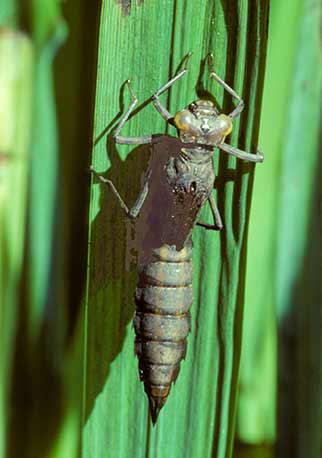
The thorax of the emerging adult pushes through.
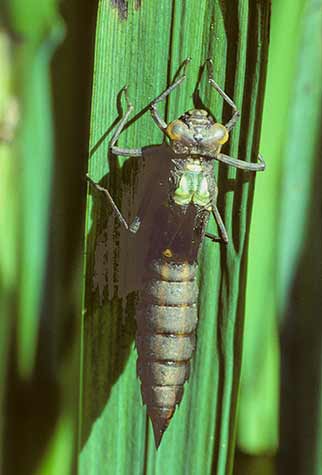
The head, legs and upper part of the abdomen emerge.
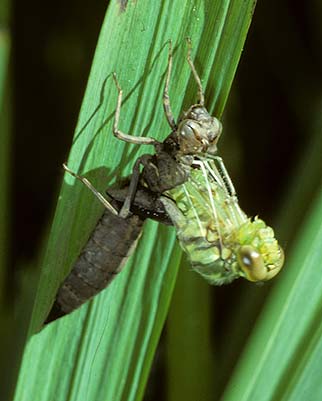
The insect falls backwards to rest, hanging vertically downfrom the larval case, held in position only by the grip of the now hollow larval case legs. Wings at this stage are barely worthy of the name, small and shrivelled.
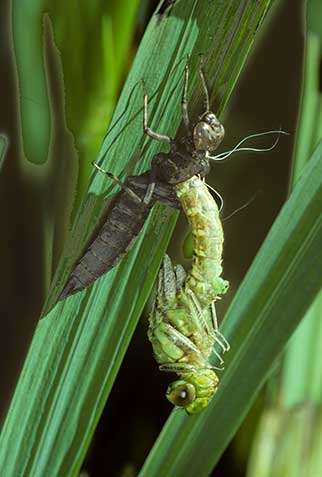
The suspended insect gently swings, pendulum-like, backwards and forwards, gathering momentum before flinging itself upwards to grab with its legs the head of the larval case. It then extracts the remainder of its now oddly curved abdomen and continues to cling to the larval case, its wings now just tiny, shrivelled versions of what soon will be.
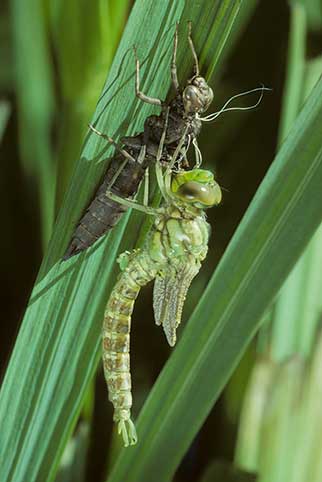
Blood pumps through the abdomen, which progressively straightens; and through veins in the wings, that gradually expand. The wings at first are held along the line of the abdomen, and are pale, opaque.
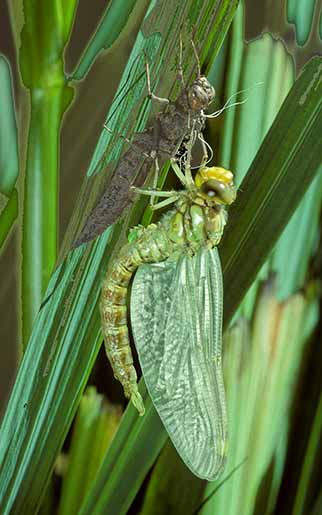
As they harden, the wings take on the familiar, transparent appearance, and eventually assume the normal outstretched resting position. The muscles of the abdomen eventually start to vibrate as the insect warms up for its maiden flight. Then off it goes into the air, a beautiful winged adult. Pale, teneral body colours will last for a few days, but eventually, full adult colouration will be gained.
And so the cycle is completed. The adult will soon be ready to find a mate and start the next generation.
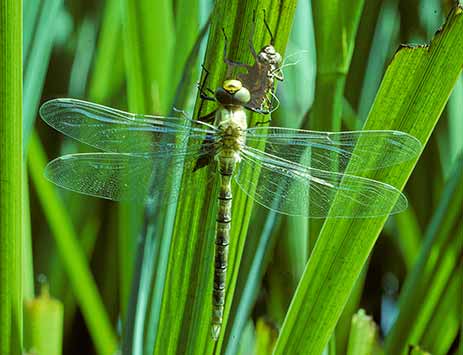
More links
Other related links
Search this site

Sadly, 58 animals were killed - 35 ponies, 13 cows, 8 donkeys and 2 sheep, whilst a further 32 were injured - 3 pigs, 9 donkeys, 11 cows and 9 ponies.
(Forty-three accidents occurred in daylight, 15 at twilight and 101 in the dark. Twenty-seven accidents were not reported by the driver involved).
Here's just one horrific example - Three donkeys killed in collision with van at notorious New Forest blackspot (Advertiser and Times)
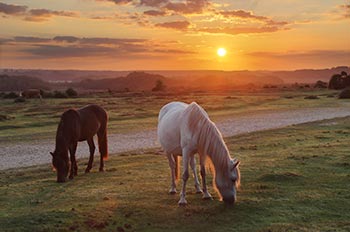
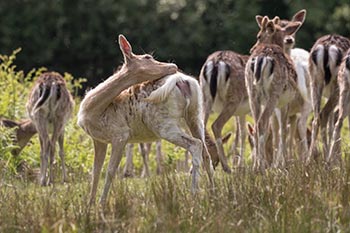
Sika deer continue to engage in rutting behaviour, and will do so until December.
Pigs seek out the remains of the acorn crop.
Beech leaves are transformed into a magnificent mosaic of glorious reds and golds. Other deciduous trees, too, take on an autumnal cloak before their leaves fall.
Dragonflies can occasionally be seen on the wing on bright days early in the month.
December
Foxglove leaves survive the winter at ground level, and offer the prospect of colourful summer blooms to come.
Redwings and fieldfares, autumn and winter visitors, gorge on haws and holly berries.
Great grey shrikes and hen harriers hunt over the heaths and other open spaces.
Honeysuckle by the end of the month often shows welcome signs of new growth.

